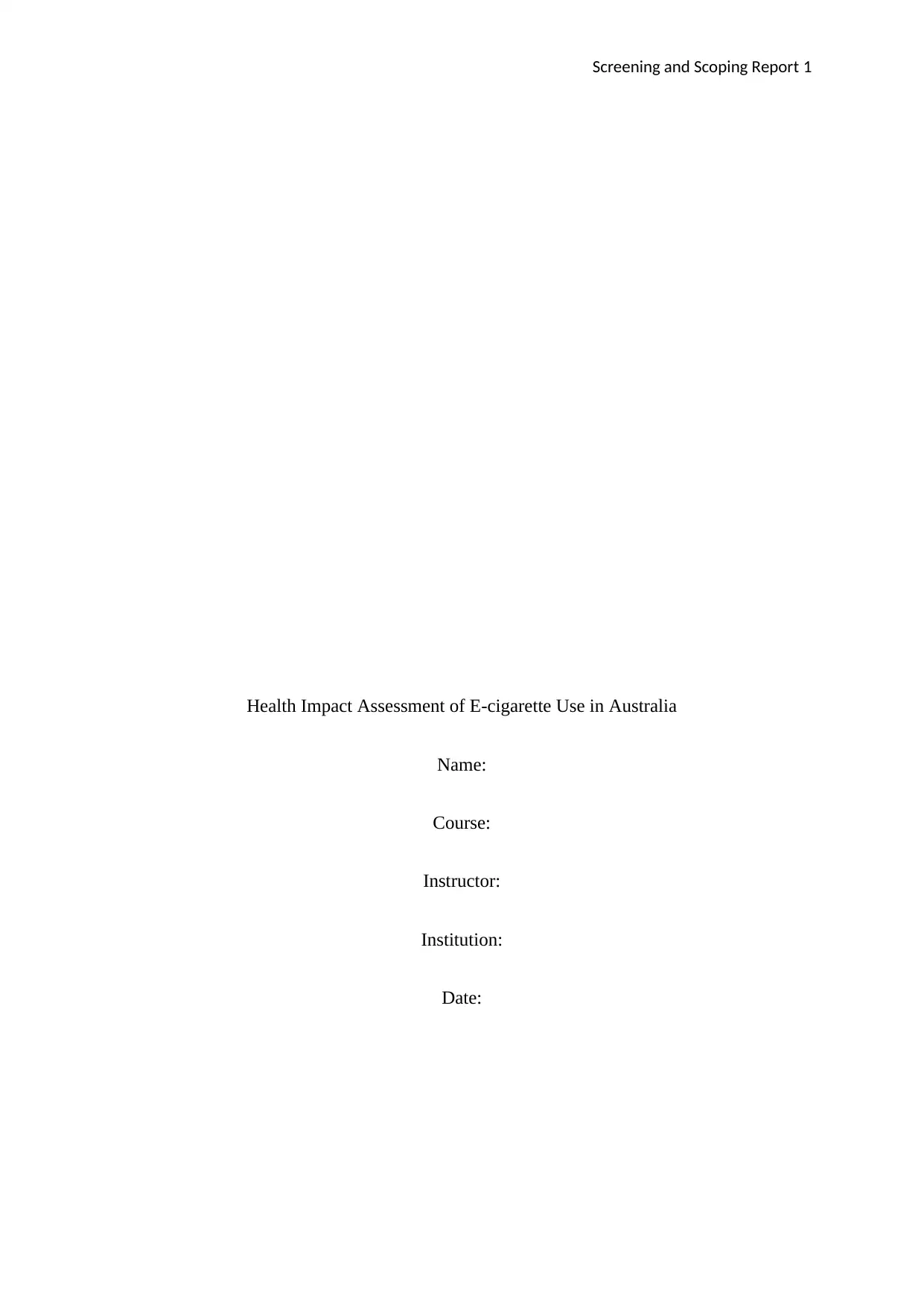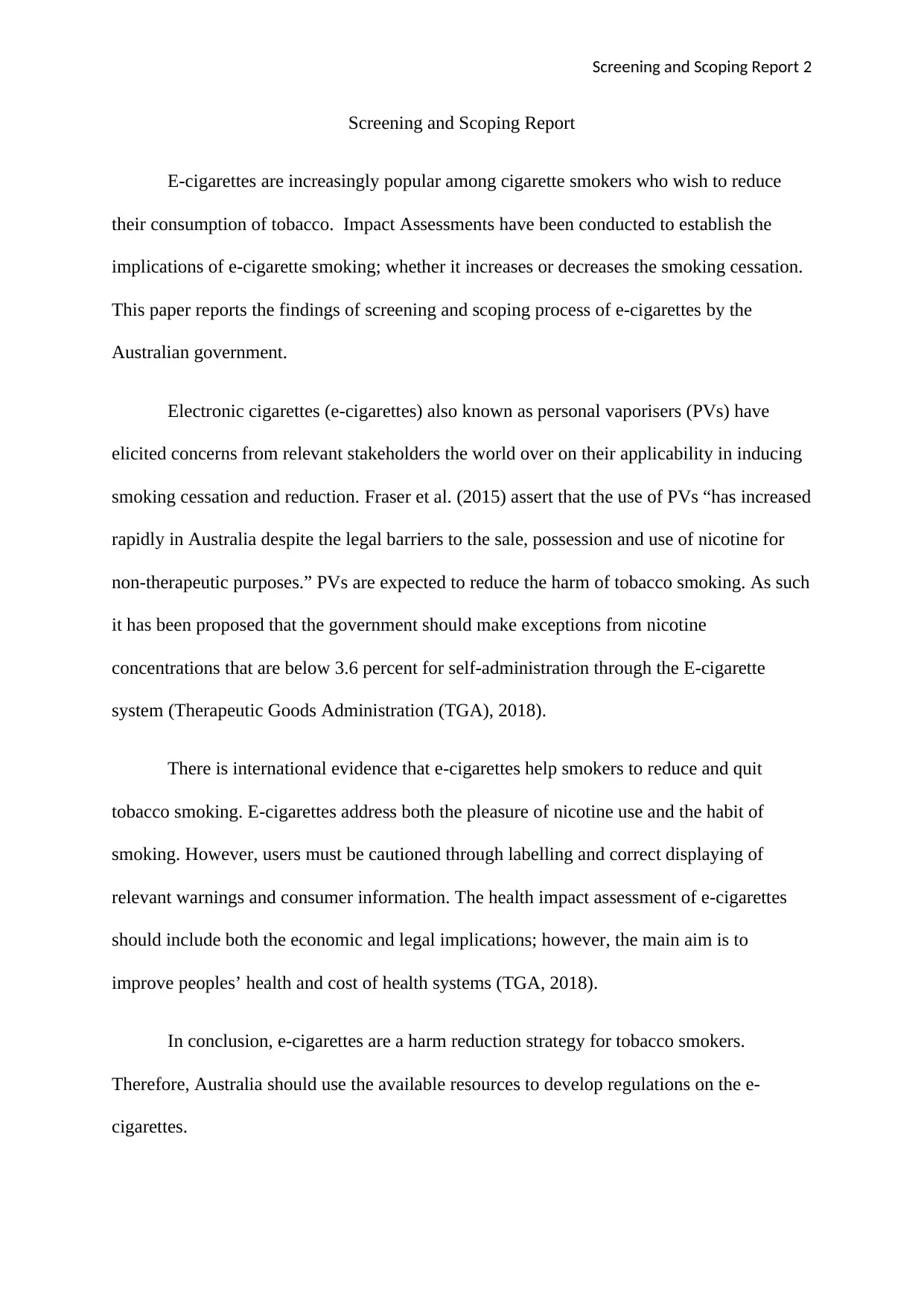Screening and Scoping Report: E-cigarette Health Impact Assessment
VerifiedAdded on 2020/05/28
|3
|383
|168
Report
AI Summary
This report presents a screening and scoping analysis of the health impact of e-cigarettes, focusing on their potential to aid in smoking cessation. The report examines the use of e-cigarettes, also known as personal vaporizers (PVs), and their increasing popularity, particularly in Australia. It discusses the legal and regulatory context surrounding e-cigarettes, including the proposed exceptions for nicotine concentrations. The report references international evidence supporting e-cigarettes' effectiveness in reducing and quitting tobacco smoking, highlighting the importance of appropriate labeling and consumer information. The assessment considers both the economic and legal implications, with a primary focus on improving public health and reducing healthcare costs. The report concludes by advocating for the development of regulations concerning e-cigarettes in Australia to leverage their potential as a harm reduction strategy for tobacco smokers. It references key sources such as the Therapeutic Goods Administration (TGA) and Fraser et al. (2015) to support its findings.
1 out of 3









![[object Object]](/_next/static/media/star-bottom.7253800d.svg)